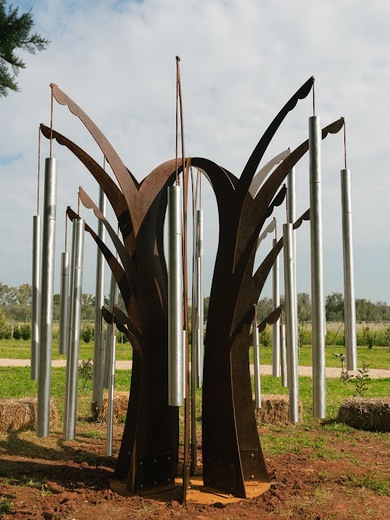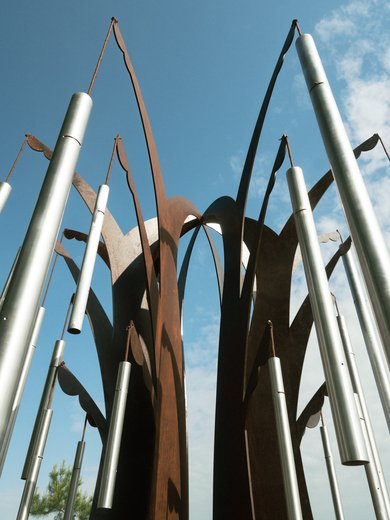

| CANVAS OF PLANS & DRAWINGS |
INTERIOR & DÉCOR, but with a twist |
| HOTELS & RESTAURANTS, beyond mainstream |
Notes on ART |
| Into big AFFAIRS | INSIDERS |
| GLIMPSES | |
Keywords:

Created by Sew Handpan, SoundTree takes the form of a tree, but avoids imitation. Its silhouette echoes nature, yet remains abstract enough to provoke interpretation. It stands in outdoor spaces not as decoration but as an invitation: to listen, to touch, to linger. Its core consists of hand-tuned chimes, whose tones are neither imposed nor predefined, but emerge through interaction – through the curiosity of a passerby, the breeze of an afternoon, the rhythm of a gathering. Every encounter creates a unique soundscape, unrepeatable and ephemeral.
This is where SoundTree diverges from traditional outdoor design. It does not aim to furnish or embellish, but to activate. It turns stillness into vibration, silence into presence. It speaks to those who believe that space is not complete until it is lived—that the atmosphere of a place is shaped not only by what is seen, but by what is felt, heard, remembered.


There is a sculptural quality to SoundTree, but it resists being just a sculpture. It is not monumental, but intimate. Not loud, but attentive. It carries a kind of emotional charge, yet never demands attention. Instead, it quietly transforms the space around it, drawing people into a relationship – with the object, with the sound, with the setting itself. In this sense, SoundTree is not a fixed installation, but a living threshold between the built and the organic, the intentional and the incidental.


Sound, in this context, becomes a material in its own right—just as important as wood, stone, or light. It becomes architectural. And yet it retains a certain humility: it doesn’t impose itself as function or spectacle. It offers a presence that adapts, waits, resonates. It is there to be discovered, not consumed.
To encounter SoundTree is to be reminded that design can be quiet and still speak volumes. That interaction need not be mediated by technology, but can arise through the simplest of gestures—a hand extended, a note struck, a moment shared. It proposes a different rhythm, one that values pause over productivity, resonance over noise.
In a world increasingly saturated by distraction and acceleration, SoundTree offers something else: a space that listens. And in doing so, it gently asks us to do the same.